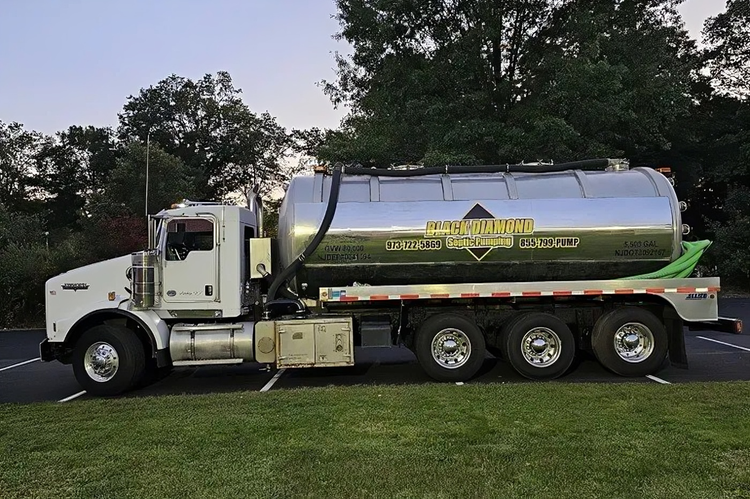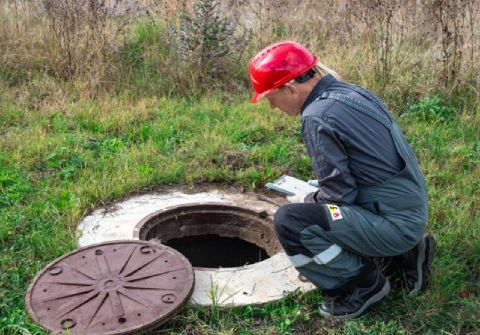How Often Should You Pump Your Septic Tank?
What Does a Septic Tank Do?
Before we talk timing, let’s quickly go over what a septic tank actually does.
Basically, every time you flush, wash, drain, or rinse something down a sink or toilet - it goes to your septic tank (if you’re not on a city sewer system, of course). This tank is buried underground, and it holds wastewater long enough for the solids to settle at the bottom (forming what’s called a sludge) and for the oils and grease to float at the top (scum).
The middle layer -that’s the relatively clean water (known as ‘effluent’) that flows out into the drain field, where it’s naturally filtered by the soil.
Over time, though, that sludge at the bottom builds up. And if you don’t pump it out? Bad things happen. Think backups. Think smells. Think expensive repairs.


What Does a Septic Tank Do?
Factors Affecting the Frequency of Septic Pumping
3-5 years is a good baseline for pumping your septic tank, according to the U.S. Environmental Protection Agency (EPA) and most licensed professionals. But again - it depends.
Here’s what affects your pumping schedule:
- Household Size
A family of six? You’re probably flushing more than a couple living alone. More people = more wastewater = faster fill-up.
- Tank Size
Bigger tanks can hold more sludge before needing a cleanout. Smaller tanks fill up quickly.
- Water Usage
Long showers, laundry marathons, constant dishwasher cycles - all of it adds up. If you are water-happy, your tank is getting more action.
- Solids Load
And here’s where things get a little awkward: what are you flushing? Wet wipes (even the ‘flushable ones’), feminine hygiene products, paper towels, grease down the sink - these things all cause your tank to fill faster (and can mess with the bacteria doing the breakdown work).

Signs It’s Time to Pump (Spoiler: It’s Usually Too Late)
There are some warning signs your tank is full - but by the time you notice them, you’re often past the point of easy fixes.
- Slow drains and toilets that gurgle
- Nasty odors in the yard or around drains
- Pooling water or soggy ground near the drain field
- Sewage backups (yep - actual sewage)
If you’re seeing (or smelling) any of this - call a professional, stat.
A Quick Example
Let’s say you’ve got a 1,000-gallon tank. You’re a family of four. According to the University of Florida IFAS Extension, a household that size produces about 300 gallons of wastewater per day.
Now - most of that drains off as effluent. But the solids (the sludge and the scum) build up over time. It takes a few years, but eventually, that sludge layer creeps too close to the top, leaving no room for proper separation. That’s when things start to back up - literally.
Can You Go Longer Than 5 Years?
Technically? Maybe. Should you? Probably not.
Here’s the deal: Some households with very light use (think seasonal cabins or water-efficient homes) might go 6-7 years. But even then - it’s a gamble. The cost of pumping is nothing compared to the cost of fixing a failed system (which can run into the thousands, if not more).
The Pumping It Yourself Myth
Quick PSA: Don’t.
Yes, it sounds like a great way to save money. But septic systems are dangerous if mishandled. Not only are you dealing with toxic gases ( methane and hydrogen sulfide), but the equipment required is specialized. A mistake could harm you - and definitely your yard.
Leave it to the pros. Really.
Tips to Stretch the Time Between Pumps
Want to avoid calling the septic truck more than necessary? Here are a few tips to help:
- Conserve Water. Fix leaks, install low-flow toilets and showerheads, and run dishwashers only when full.
- Don’t use your toilets as a trash can. Seriously - only flush toilet paper. That’s it.
- Space out laundry loads. Doing five loads in one day overwhelms your system.
- Avoid garbage disposals. Or if you use one, do so sparingly. Food waste adds to the solids.
- Get it inspected every 1-3 years. A pro can check your tank’s sludge levels and tell you when it’s time.
Key Takeaways
If you’ve skipped ahead, no worries - here’s the quick and dirty:
- Pump your septic tank every 3-5 years
- Your schedule depends on household size, tank size, water use, and waste habits
- Don’t wait for backups or odors - get ahead of problems
- Inspections help you know when it's time
- DIY pumping is a big fat nope
Take care of your tank, and it’ll take care of you. No stink, no stress, no sewage in your yard.
Final Thoughts (and a Friendly Nudge)
Okay - so maybe this isn’t the sexiest home maintenance topic out there. But septic systems are one of those things that work beautifully when you take care of them... and turn into a disaster when you don’t.
Regular pumping - every 3-5 years - isn’t just responsible, it’s cost-effective. It’s a few hundred bucks to keep your system in top shape vs. potentially tens of thousands to dig up and replace a failed one.
And honestly? Peace of mind is worth a lot.








